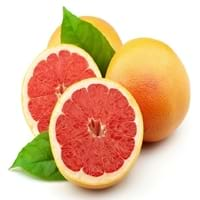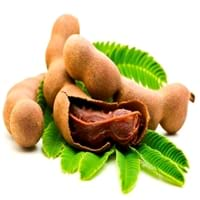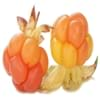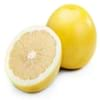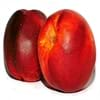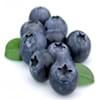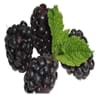Health Benefits
Arthritis prevention, Asthma treatment, Cancer prevention, Kidney stone treatment, Liver health
Boosts immune system, Boosts respiratory health, Cancer prevention, Digestive aid, Piles treatment
General Benefits
Anti oxidant properties, Boosts immune system, Cures cough, Eye care, Fights against infections, Helps in weight loss, Improves eye vision, Maintains healthy cholesterol level, Treatment of common cold
Beneficial in improving nerve function, Protects against parasites and worms, Relieves pain
Skin Benefits
Anti-aging benefits, Brightens and lightens complexion, Reduces wrinkles, Treatment of dark spots
Anti-aging benefits, Brightens and lightens complexion, Exfoliates skin, Hydrates skin, Treatment of dark spots
Hair Benefits
Prevents hair loss, Protects hair, Regulates hair growth, Treatment of dandruff
Prevents hair loss
Allergy Symptoms
Abdominal pains, Decrease in blood pressure, Diarrhea, Dizziness, Eczema, Hives, Lightheadedness, Nausea, Runny nose, Swelling of mouth, tongue or lips, Vomiting
Abdominal pains, Breathing difficulty, Dizziness, Eczema, Fainting, Hives, Itching, Nasal congestion, Swelling of face, Tingling sensation in mouth, Vomiting
Side Effects
Allergic reaction
Decrease in blood sugar levels, Induces acid reflux, Allergic reaction, Tooth decay, May form gallstones
Best Time to Eat
As a snack in the late afternoon, Don't consume at night and before bed, Don't eat after meal, Morning time (before lunch), Strictly avoid empty stomach
Along with meal, As a snack in the late afternoon, Don't consume at night and before bed, Strictly avoid empty stomach
Vitamin B5 (Pantothenic Acid)
Vitamin C (Ascorbic Acid)
Vitamin K (Phyllochinone)
Phytosterol
Not Available
Calories in Fresh Fruit with Peel
Not Available
Not Available
Calories in Fresh Fruit without Peel
Calories in Frozen Form
Not Available
Calories in Dried Form
Not Available
Calories in Canned Form
Not Available
Not Available
Type
Citrus, Tree fruit
Tropical
Season
All seasons
Spring, Summer
Varieties
Rio Star, Flame, Thompson and Star Ruby
PKM 1, Urigam, Hasanur, Tumkur prathisthan, DTS 1 and Yogeshwari
Color
Pink, Red
Brown, Reddish-brown
Shape
Round
Curving Cylinder
Taste
Sweet, Tangy
Sour-Sweet
Soil Type
Loam, Well-drained
Loam, Sandy, Sandy loam, Well-drained
Climatic Conditions
Humid, Warm
Humid to dry, Rainfall, Warm to hot climate
Facts about
- Grapefruit is used to protect wooden tools due to its anti-fungal properties.
- It grows in clusters as grapes & hence called as grapefruit.
- This fruit tastes delicious when paired with fish, e.g. in fish salads.
- Tamarind is used to prevent body odor.
- African children use the tamarind seeds in games.
- No cases of tamarind toxicity or allergy reported till date.
Other Countries
Argentina, India, Israel, Mexico, South Africa, Sudan, Thailand, Turkey, United States of America
Africa, Australia, Brazil, China, Mexico, Nigeria, Sudan, Taiwan
Top Importer
Japan
United States of America
Top Exporter
United States of America
Thailand
Botanical Name
Citrus paradisi
Tamarindus indica
Synonym
Not Available
Tamarindo, tamarindus
Subkingdom
Tracheobionta
Tracheobionta
Division
Magnoliophyta
Magnoliophyta
Class
Magnoliopsida
Liliopsida
Species
C. × paradisi
Tamarindus indica
Generic Group
Citrus fruit
Tamarind Sub
Difference Between Pink Grapefruit and Tamarind
We might think that Pink Grapefruit and Tamarind are similar with respect to nutritional value and health benefits. But the nutrient content of both fruits is different. Pink Grapefruit and Tamarind Facts such as their taste, shape, color, and size are also distinct. The difference between Pink Grapefruit and Tamarind is explained here.
The amount of calories in 100 gm of fresh Pink Grapefruit and Tamarind with peel is Not Available and Not Available and the amount of calories without peel is 42.00 kcal and 239.00 kcal respectively. Thus, Pink Grapefruit and Tamarind belong to Low Calorie Fruits and High Calorie Fruits category.These fruits might or might not differ with respect to their scientific classification. The order of Pink Grapefruit and Tamarind is Sapindales and Fabales respectively. Pink Grapefruit belongs to Rutaceae family and Tamarind belongs to Fabaceae family. Pink Grapefruit belongs to Citrus genus of C. × paradisi species and Tamarind belongs to Tamarindus genus of Tamarindus indica species. Beings plants, both fruits belong to Plantae Kingdom.
